London is not laid out on a grid: it is organic. It grew out of chaos, and it is still chaos for many of us Americans. But I am getting the hang of it. On a recent trip, I was able to find my favorite sites without a map.

Portrait of Lytton Strachey by Dora Carrington
In Bloomsbury I took a self-guided Virginia Woolf walk. That was rather a let-down, as it is essentially looking at blue plaques on row houses. Still, I loved the views of Tavistock Square and Gordon Square, where Virginia and, indeed, almost the whole Bloomsbury group, lived at one time or another in the early 20th century. And then to make it even more thrilling, I saw portraits and busts of the Bloomsbury Group at the National Portrait Gallery including paintings by Vanessa Bell and Dora Carrington. There are portraits or busts of Virginia, Violet Trefusis, Lytton Strachey, Vanessa, Duncan Grant, and E. M. Forster. What an incestuous group they were! Brilliant, but always sleeping with each other.
At the British Museum in Bloomsbury, I felt like a Barbara Pym character: her characters sometimes work or live in Bloomsbury, and surely that’s where all her strange little anthropological societies are housed. Think of “Less Than Angels” and “Quartet in Autumn.”
Here’s how I know I have a better feel for it than I used to. I was able to find every bookstore in London by instinct.
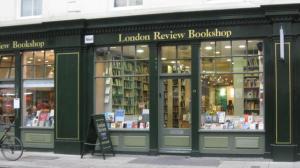 But where are the signs? Tiny almost organic signs are posted high on buildings. It is easy to miss Bury Place across from the British Museum, and you don’t want to miss it because the London Review Bookshop is there.
But where are the signs? Tiny almost organic signs are posted high on buildings. It is easy to miss Bury Place across from the British Museum, and you don’t want to miss it because the London Review Bookshop is there.
The London Review Bookshop is the perfect size for an independent bookstore. Not too big, not too small, with every book carefully chosen and arranged (by whom? The manager? The booksellers together? The LRB itself?). I almost bought an edition of Keats, because it had an intro by Jane Campion. But I have my Keats at home. And, naturally I went crazy in the fiction section, where there were fascinating small press books on a table, and I was able to find new books not available in the U. S., among them “The Essex Serpent.” There are also Turkish books on a table, since they are having a Turkish month.
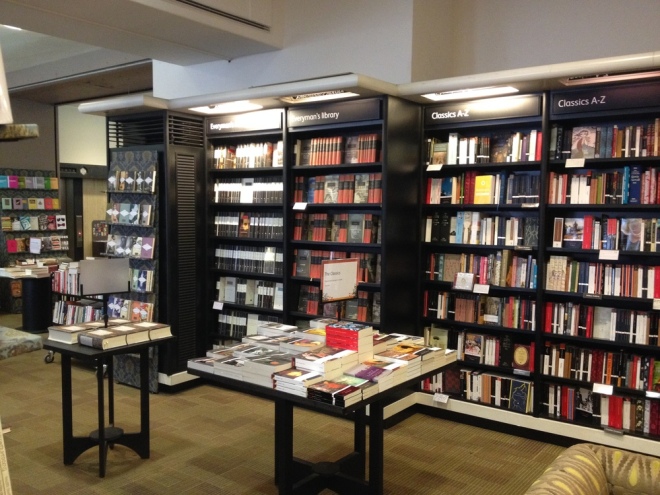
Waterstones Picadilly
I love the booksellers’ culture in London. We don’t have that much in the U. S. anymore, except in big cities and a few university towns. Waterstones in Picadilly reminds me of the original Borders chain in the ’90s, which had everything you could imagine. Waterstones is breathtaking. The tables are cleverly organized: at the moment they are displaying paperback novels from different decades, the 60s, the ’70s, etc. Lots of small-press books and I was very amused by arrangement of the historical fiction titles on a table, “Gladiators & (Somethings)” (Oops, I should have taken notes.)
Foyles is also stunning, and I couldn’t decide if I preferred it or Waterstones. They are competitors.
As for used bookstores, Cecil Court near the Trafalgar Square 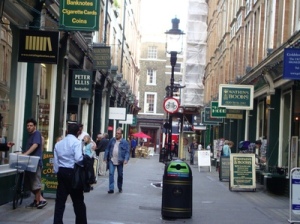 stop has many charming shops, but they are pricey. I would have loved a first edition of a collection of Kay Boyle’s stories , but I couldn’t justify it. I have her Complete Stories at home.
stop has many charming shops, but they are pricey. I would have loved a first edition of a collection of Kay Boyle’s stories , but I couldn’t justify it. I have her Complete Stories at home.
There are also some remarkable used bookstores on Charing Cross Road, and others not.
Don’t forget Skoob in Bloomsbury, the best used bookstore for the common reader (and collectors).
TIP. And so I have discovered it is much more fun to see the sights than to take self-guided walks from the guidebook, or even walks with experts, I love getting off the tube and seeing Buckingham Palace.
At the Queen’s Gallery at Buckingham Palace, you can see an excellent exhibition of the Royal Collection of Scottish paintings.
I drroled over Westminster Abbey and sat peacefully in one of the small gardens. I never cared much about royal weddings but I was ecstatic at the National Portrait Gallery to see the portraits of Princess Diana and Kate. Oh my goodness! There is a royal-loving gene in me after all, and I did love both of Obama’s inaugurations.
The trip ended in hilarity at the National Gallery when I had looked at so much art that Velasquez’s Saint John the Evangelist on the Island of Patmos looked EXACTLY like James Franco. Well, maybe there is a slight resemblance.

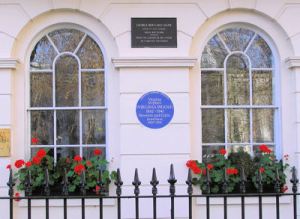
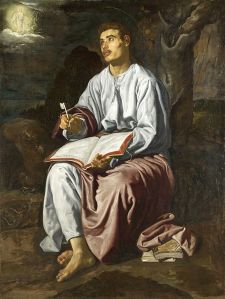
What a lovely bookish trip! Central London (at least, the important bookish bits) is quite easy to get the hang of, and you certainly took in the sights. The LRB bookshop is amazing, as are Foyles and Waterstones Piccadilly. In a contest I’d probably choose Foyles over Waterstones – I have an emotional attachment to Foyles! 🙂
LikeLike
Yes, if only I could get OUT of Central London now. I keep meaning to go to Oxford… it was a nice trip!
LikeLiked by 1 person
The Essex Serpent! I know I could order it from Book Depository, but still there’s a thrill of getting a book in a shop that’s not available at home.
I am so sad that the Slightly Foxed bookshop closed before I had a chance to go to London. I was really looking forward to a visit.
LikeLike
Thanks for reminding me about the Book Depository. Yes, I could have gotten all my books there, but it is nice to go to thriving bookshops. I’ve heard of Slightly Foxed–didn’t know they’d had a bookshop. I forgot to go to the Persephone bookshop.
LikeLiked by 1 person
I loved reading this. Lucky, lucky you!!!!
LikeLike
I’m not much of a traveler, so I have to store up all this good travel experience for another year or two!
LikeLike
It’s been sixteen years since I’ve been to London. It’s my second favorite city. James Franco?! Yes, I can see that! That man is everywhere!
LikeLike
I have traveled so rarely, but do feel at home in London. I’m glad you think Saint John and James Franco look alike!
LikeLike
Did you just take this trip this month? or is this the trip you took a few years ago? if it’s a second trip, you are indeed lucky. I can see how one would do much better the second time round. That would be true of anywhere one would go.
Yes London is not built on a pre-conceived grid. I remember how Trollope made fun of the parallelograms and other grids he found in American cities. He seemed to feel they were so unnatural. Nature can be over-rated and it is natural to lay out a city with clarity if you have the chance to.
We see here how differently cities emerge since technology has changed. One could not have the big vision and hope for largeness in an earlier world; people were afraid of strangers too — and rightly so cities in the middle east (the oldest) are often set up so people can hide effectively.
LikeLike
Yes, I did go this month. Oh, dear, Trollope didn’t like America, did he? aCtually I only know his mother didn’t. These European cities are so old and fascinating. The unplanned element make it hard to find things, though.
LikeLike